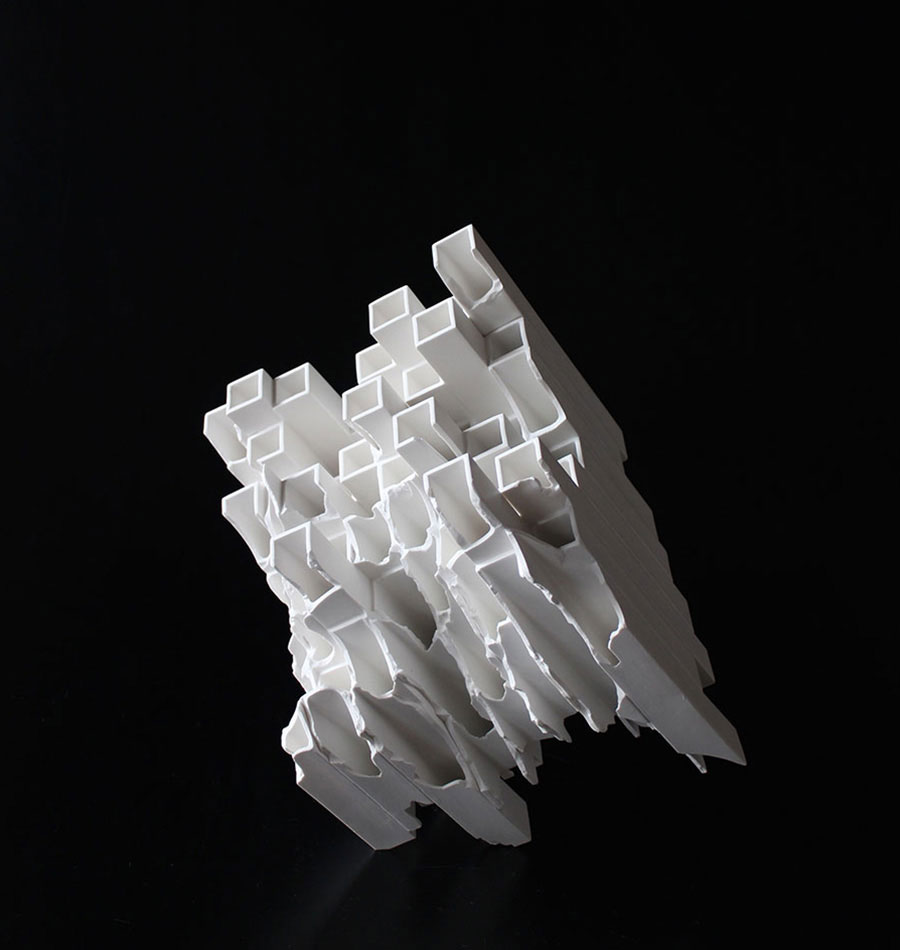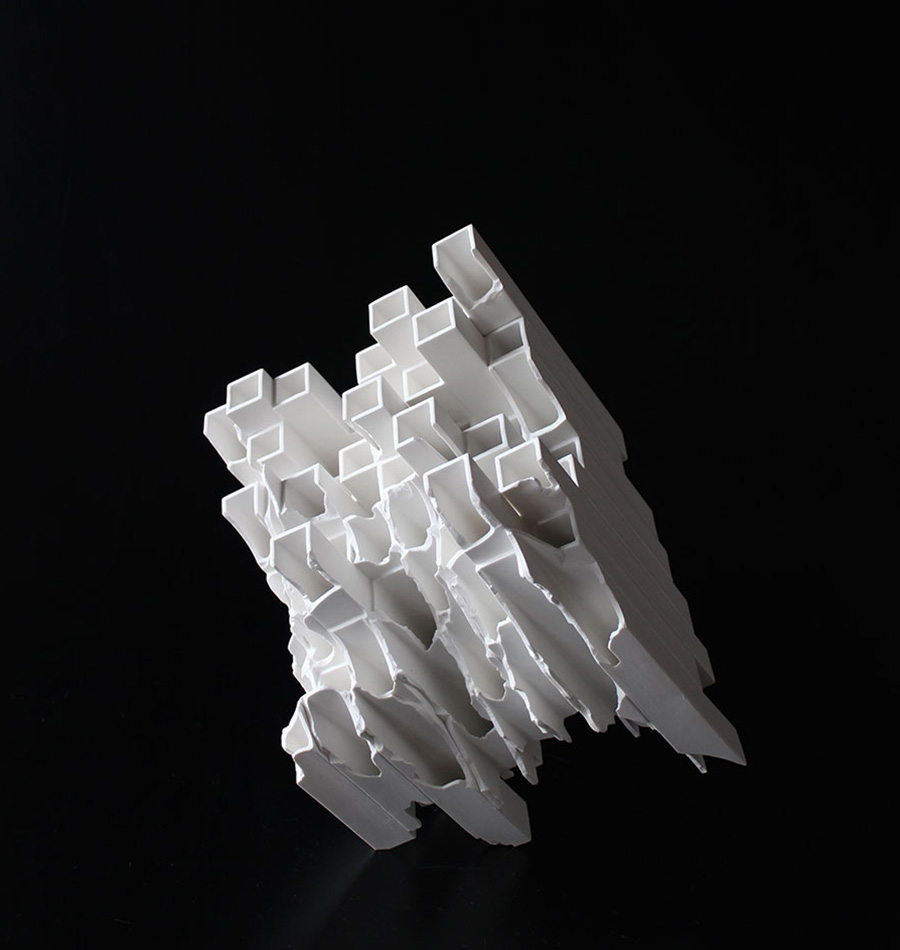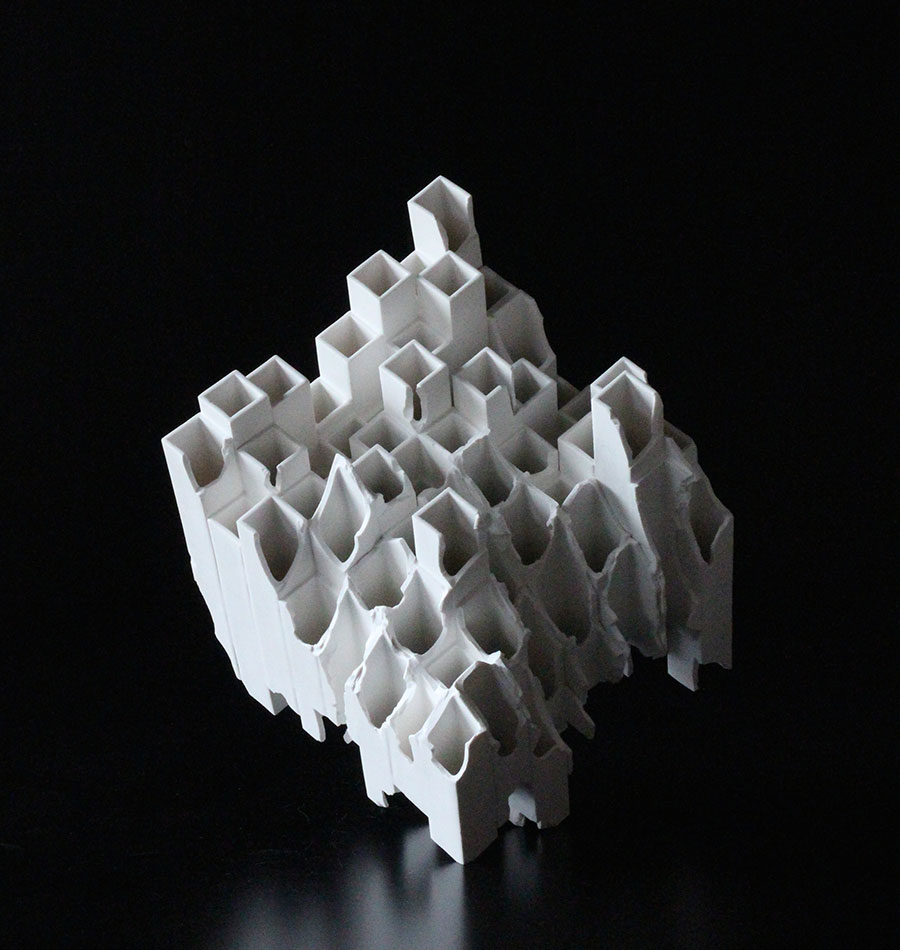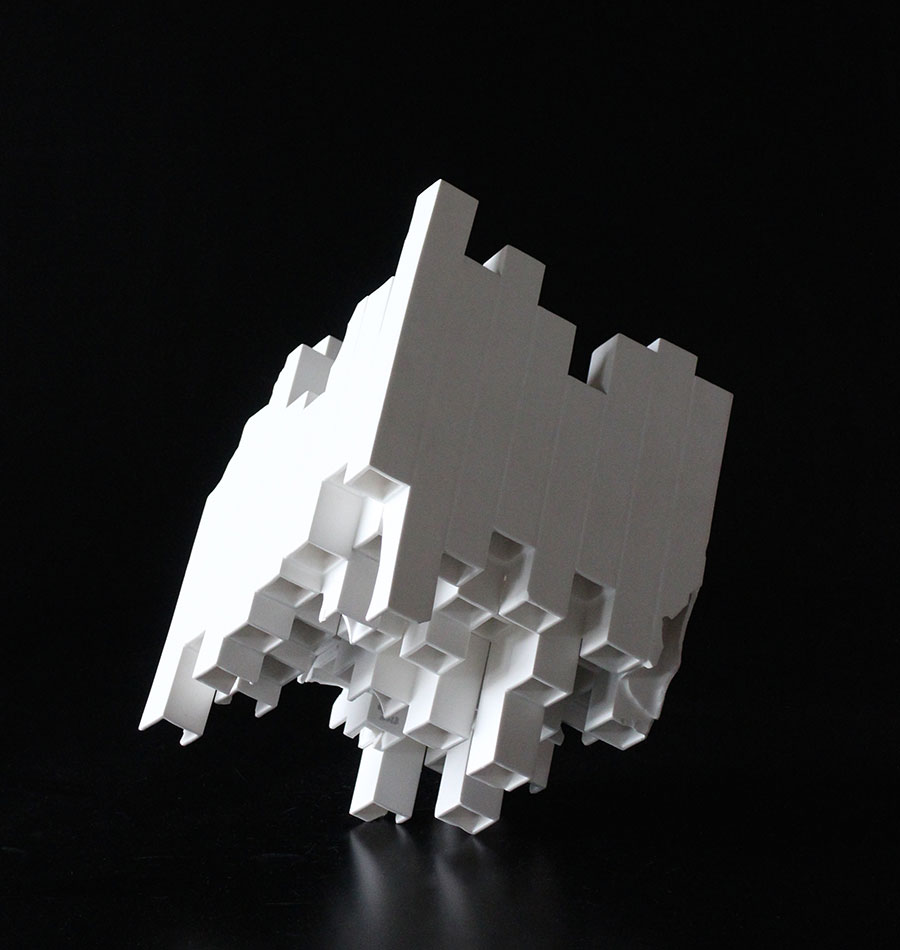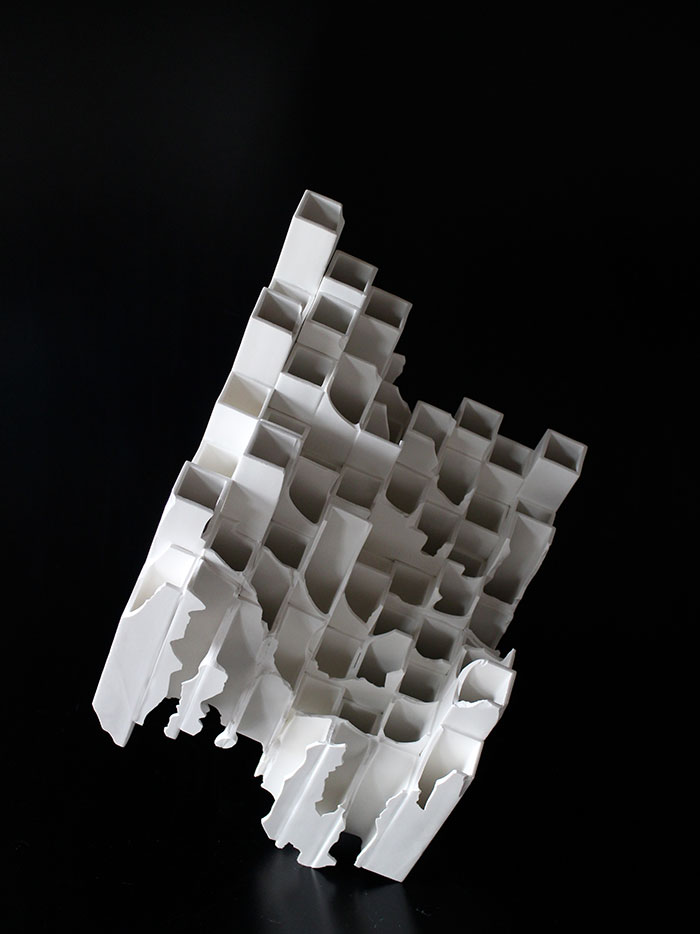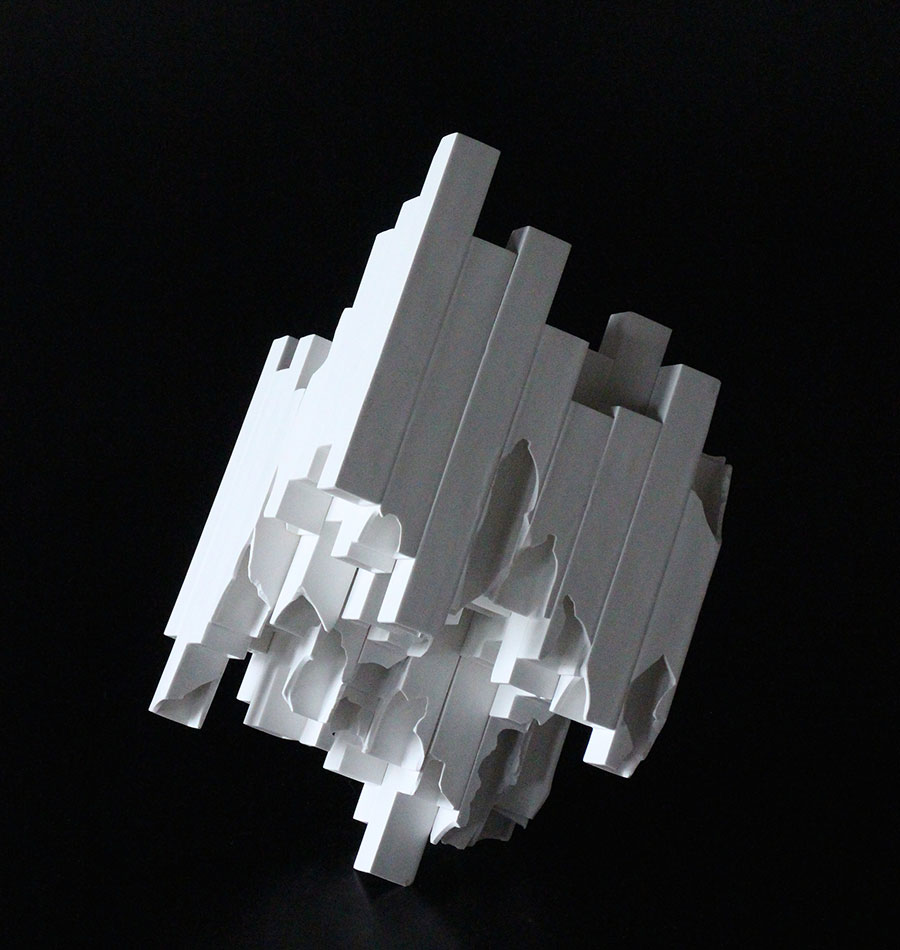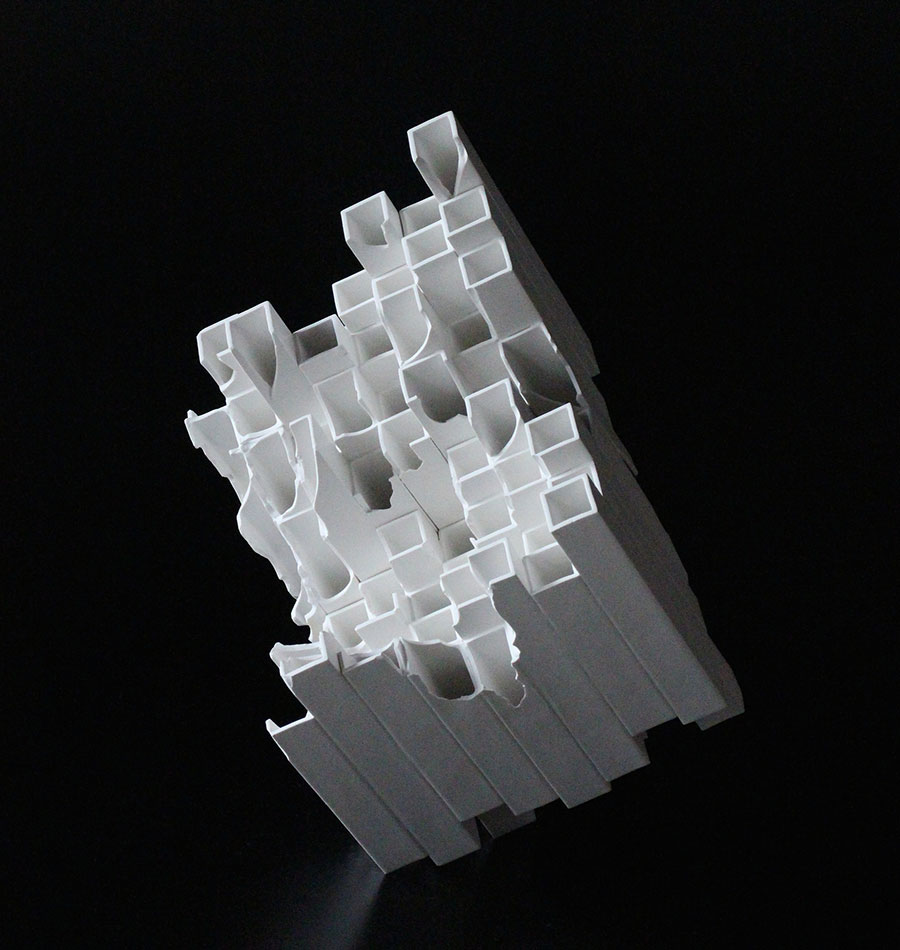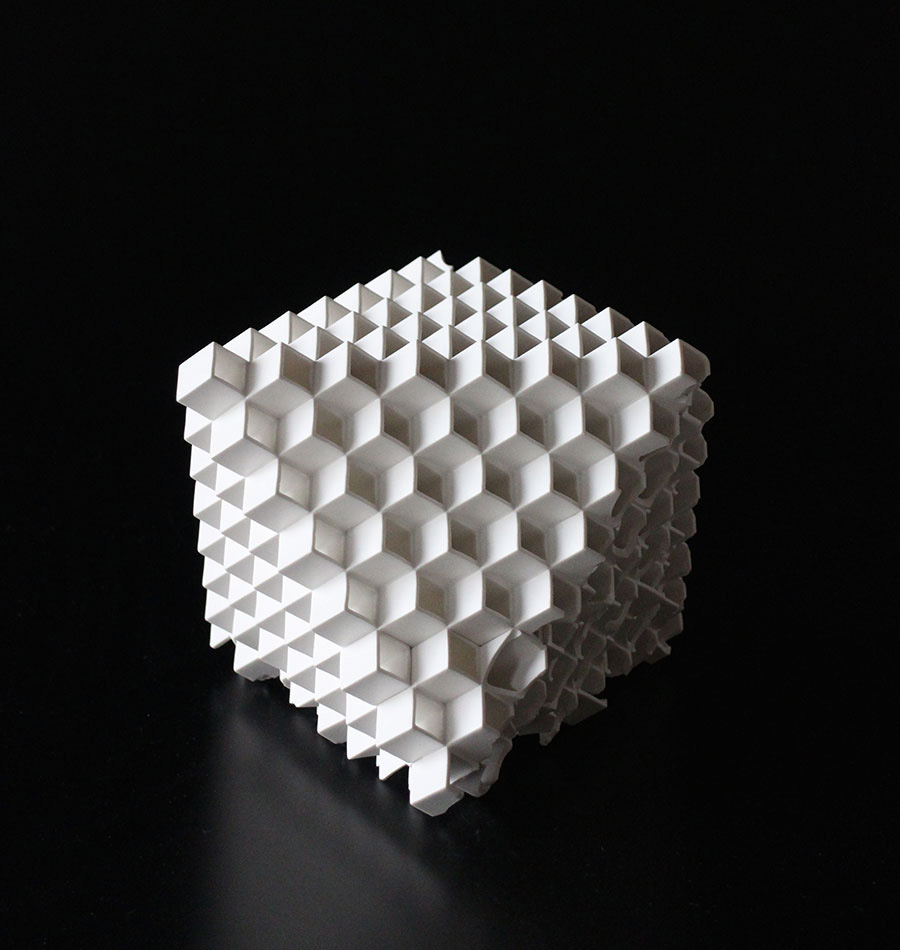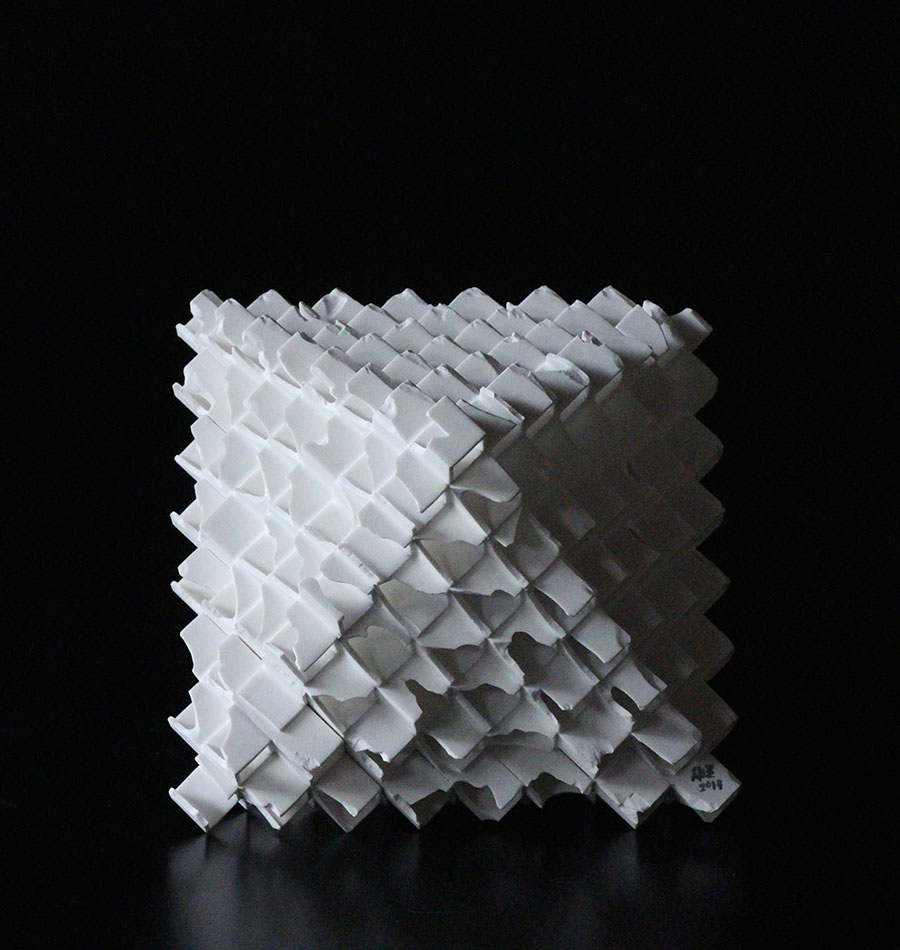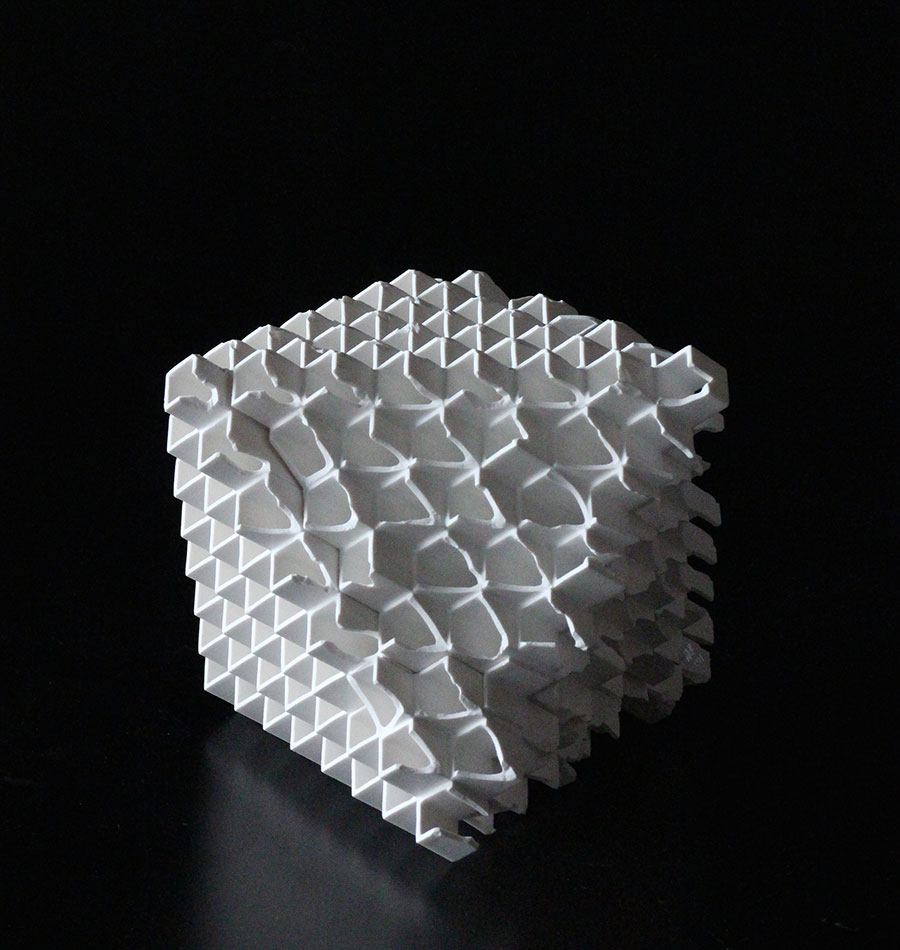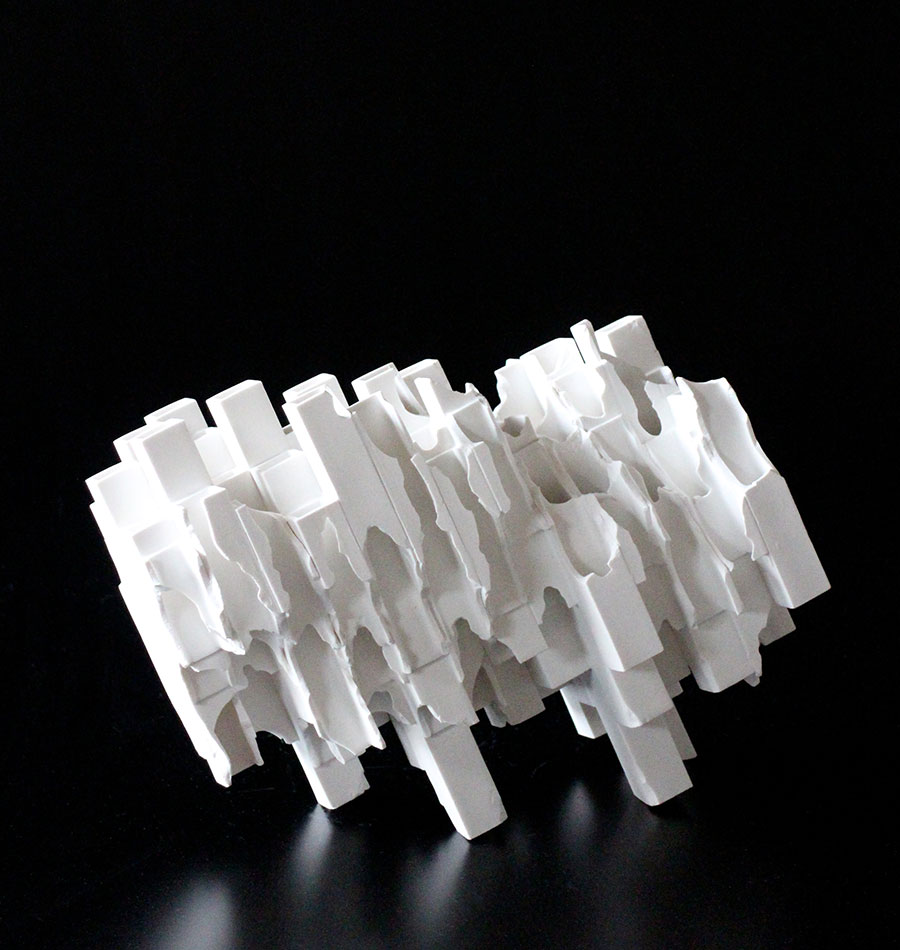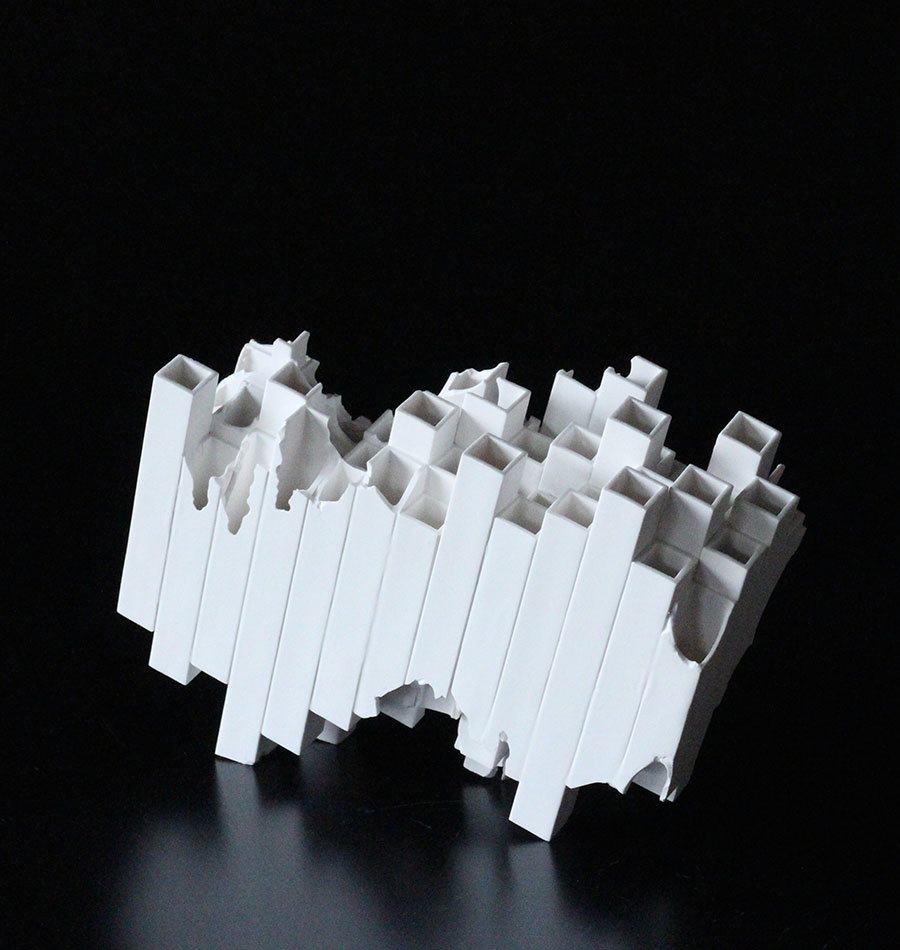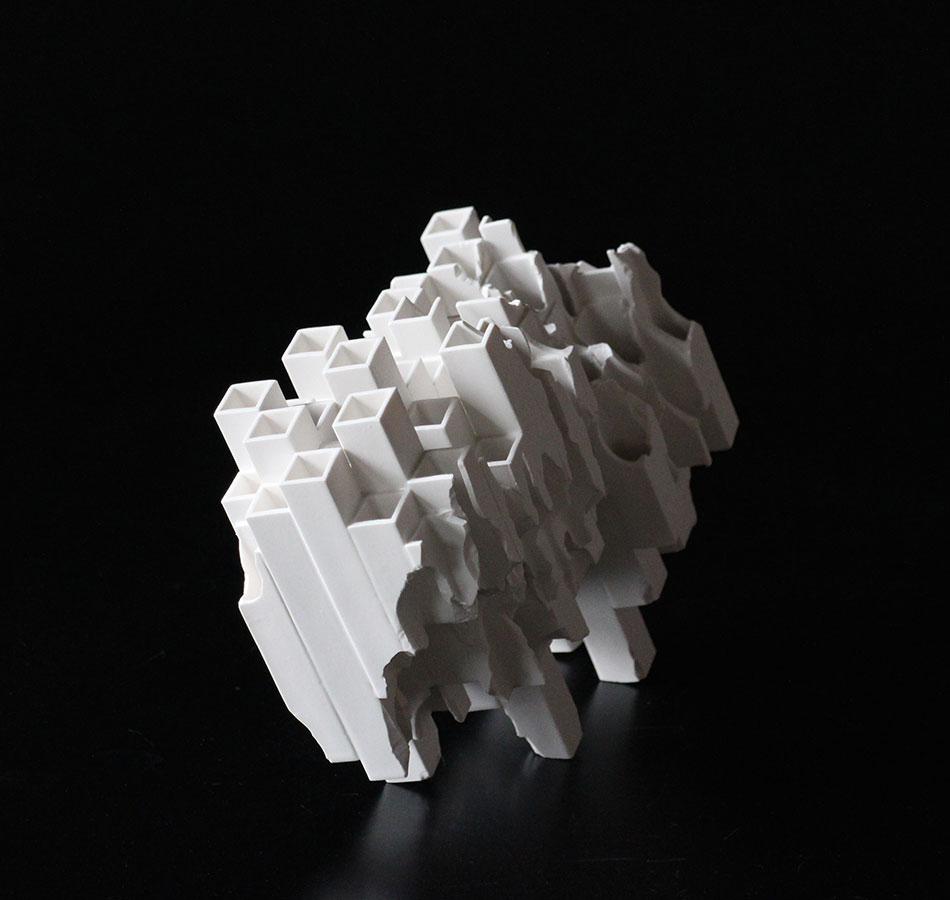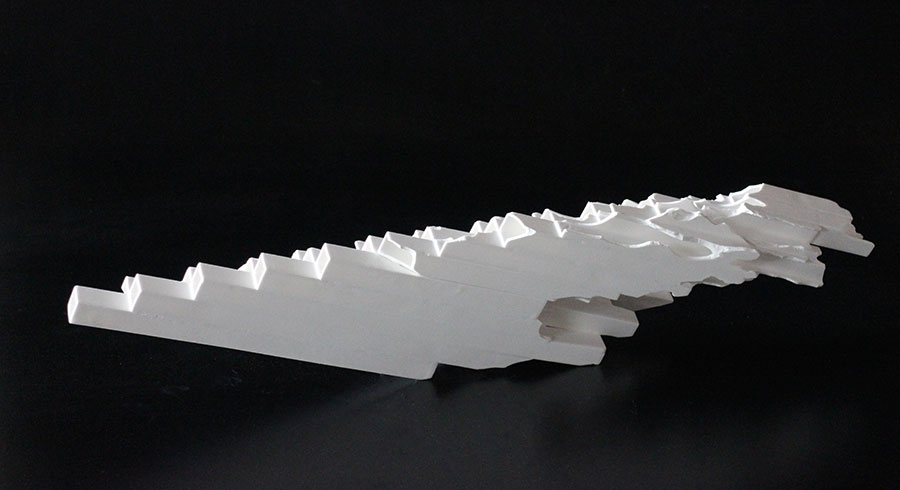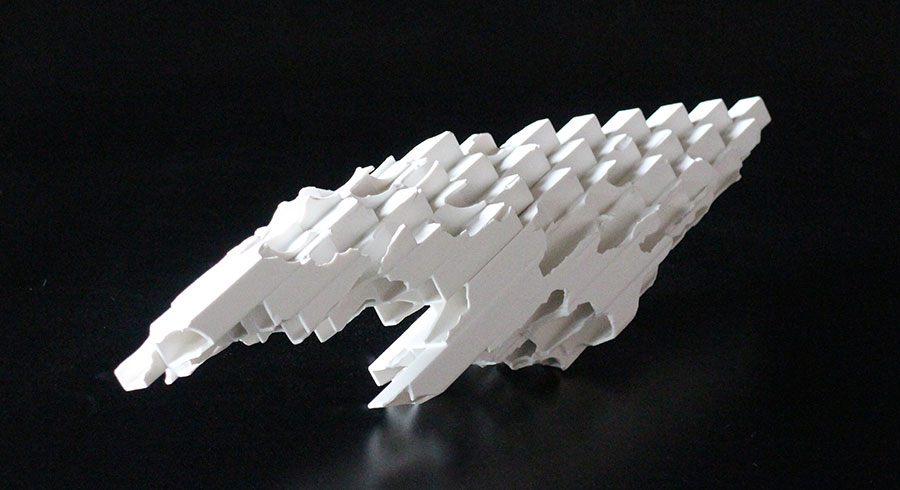Modern Remains
Introduction by Keiko Fukai
Takaeuchi Kouzo’s current work began as an accident in 2006. While he was working on his ceramic square tubes he broke one by accident, and was surprised at how much it immediately appealed to him. This instinct was the basis for his future signature series, Modern Remains. Since then, TAKEUCHI has been intentionally breaking the tubes with a hummer to complete his sculptural pieces.
For a period of time while developing his Modern Remains Series Takaeuchi worked on this instinctive appeal to him of the broken pieces. Then a new thought occurred to him. As he describes in his statement, not only is he interested in reflecting the pathos of the repetitive creation and destruction of the physical world throughout human history, but he is also challenging the taboo of selling broken ceramics.
Born in Hyogo Prefecture, where he now lives and works, Takeuchi Kouzo graduated from Osaka University of Art in 2001 with a major in ceramics. Then, he graduated from Tajimi Municipal Ceramic Design Institute in Gifu Prefecture in 2003.
I don’t know why, but since I was a child I have been attracted to geometric shapes, especially aggregated geometric shapes. When I first saw the photos of ancient ruins in South America, my creativity was inspired, and I seriously wanted to express the distinctive ambience of the decayed buildings in my work. That is when I began creating ceramic sculptures composed of square tubes.
In a stage of trial-and-error, one day I dropped a piece by accident. Shocked, I regretted my terrible mistake seriously. However, next came another shock because this broken piece looked to me more beautiful than the unbroken pieces, and it appealed to me very much. Then, with a hammer, I broke all of the other finished tubes in my studio and exhibited them in a solo exhibition in 2006. This is how my Modern Remains Series was born.
When they see the ruins of decayed buildings, many people have similar nostalgic and sentimental feelings, but if those ruins possess an exquisite balance between the contemporary existence and the deterioration from the past, I believe it is possible to enhance the ephemeral and create dynamic beauty. So, when I break my pieces to create a sculpture I try to be meticulous in my effort to find the perfect balance between the original forms and the deterioration.
The Modern Remains series is created with two major concepts in mind. First, I realize that our civilization has been built on a history of creating and breaking. The countless amazing things created by human beings throughout history have also been destroyed by human beings. Although I know this is a part of human existence, to me there is a sadness about this. And this dichotomy is what I want to express in my work.
The other concept is my desire to challenge the stereotypes of in the world of contemporary ceramics where broken piece are useless, and a broken piece denotes failure. I am raising a question about this: Can works that are broken intentionally be recognized and appreciated for a new aesthetic value in ceramics? If so it will be a groundbreaking step in the ceramic world, especially in the strong, rich, diverse world of Japanese ceramics.
My works are based on these concepts, but I don’t want to forget the feeling that the first broken piece looked beautiful to me. Whatsoever were the concepts of the works, I don’t want to create the pieces that I don’t feel beautiful. This might be one of the most important philosophies for me.

